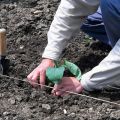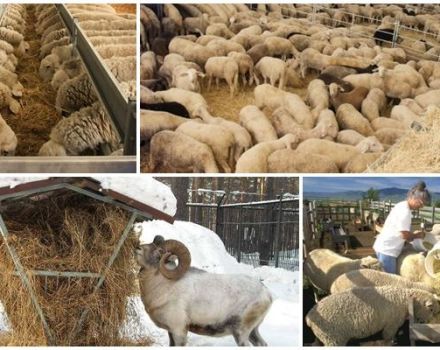Description of the variety eggplant Nutcracker, its characteristics and yield
For beginner gardeners, it is recommended to get the first experience in growing blue ones in caring for eggplant, the Nutcracker, which is considered an unpretentious, persistent, hardy variety. Newcomers do not expect special difficulties - the culture will give a generous harvest even with minimal effort. The only requirement is adherence to agricultural engineering processes, of which there are not so many.
Description and characteristics of the variety
The nutcracker is a medium-ripening variety, therefore it is recommended to grow the crop in regions with a temperate climate. 100 days elapse between the sending of the planting material to the ground and the collection of fruits; if you grow plants in seedlings, you will have to wait about one and a half months for fruiting. The variety feels good under open sunlight, but it is recommended to use a greenhouse or greenhouse for cultivation - this will allow you to get a harvest earlier.
The bushes grow up to one and a half meters, you will have to pinch, otherwise there will be few fruits. The leaves are large, round, with thorny thorns.
Distinctive quality of eggplant Nutcracker - large fruits, weighing 500 grams.
Favorable conditions will make it possible to obtain copies of up to 800 grams. The length of the fruit is 15-18 centimeters. The pear-shaped shape keeps the eggplants on the ground, which prevents rotting. Fruit pulp is tasty, bitterness is almost absent. There are few seeds, they are small, invisible in young eggplants. The skin is firm, of medium thickness. The shade of ripe fruits is black.
It is easy to get up to 5 kilograms of eggplant from one bush. Competent care and favorable weather conditions allow you to collect up to 8 kilograms from one plant.

Pros and cons of eggplant
The Nutcracker has many advantages, and even experienced gardeners are happy to grow this wonderful variety. Among the positive qualities are noted:
- good yield;
- no special requirements for growing and care;
- long shelf life without loss of presentation and taste;
The Nutcracker has almost no cons. The only thing to remember is that it is a hybrid, so you should not collect your planting material, you will not be able to get seedlings from it, every year you need to buy seeds in the store.
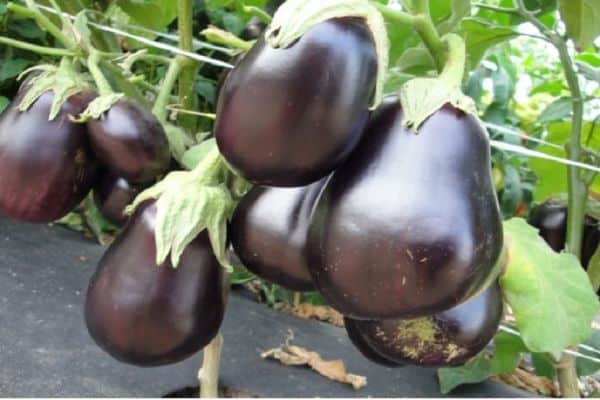
How to grow a crop
In warm regions, gardeners send the planting material directly to the open ground - favorable weather conditions allow them to harvest a good harvest.In the middle lane, it is better to use the seedling method - even if it turns out to grow a large beautiful bush with powerful lashes, it will not work to get the fruits, they will not have time to ripen.
Much depends on the timely cultivation of seedlings - if you are late in sending the planting material to the ground, you will not be able to get the harvest. Before that, it is recommended to understand the landing dates - they differ for each region.
Seed sowing date
It is recommended to grow seedlings from winter, especially to residents of warm regions. In the southern regions, it is better to send seeds to a prepared substrate at the end of winter. Gardeners living in cool climates are recommended to start the process of growing young bushes in early March. In Siberia, preparing plants for moving to the beds should be done in the middle or even at the end of the first month of spring (from March 20th).
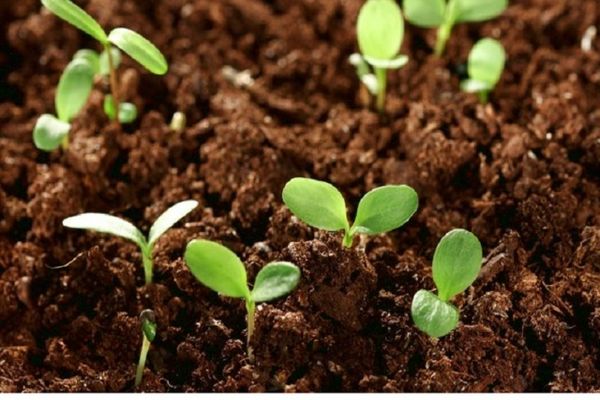
Preparation of soil and containers for seedlings
The easiest way to get a good substrate for growing young Nutcracker bushes is to go to the store and buy ready-made seedling mix.
If it is not possible to purchase ready-made soil, you can mix it yourself:
- 4 handfuls of humus.
- 2 handfuls of turf soil.
- 1 handful of coarse sand.
Before planting, sprinkle the substrate on sheets covered with parchment, bake it in the oven - this will destroy the eggs or insect larvae that can destroy the seedlings. Bacteria won't survive hot treatments either. Use trays or containers as containers. It is recommended to put a layer of drainage (expanded clay, pieces of polystyrene) on the bottom.
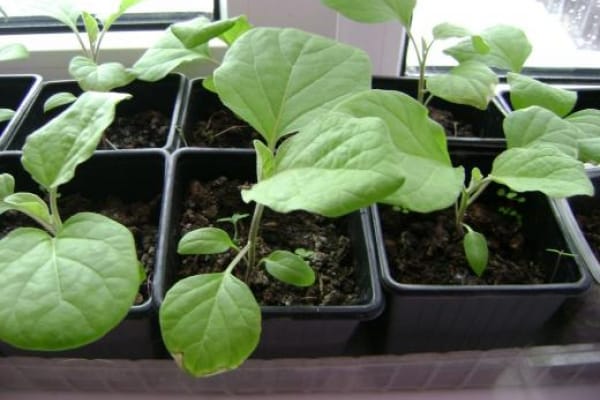
Sowing seeds
Before sending the planting material to the prepared substrate, treat it with fungicides. Make grooves in the soil, spread out into the holes, to a shallow depth (up to one and a half centimeters), seeds.
Before planting and after sending seeds to the ground, irrigate the surface of the substrate with water. Better to use a spray bottle. Be sure to cover with plastic wrap or a piece of glass.
Seedling care
After the first eggplant sprouts appear, the Nutcracker put the container with the plants in the sunniest and warmest place. Be sure to remove the film. Daylight hours should not be shorter than 14 hours; if necessary, you should use a backlight.
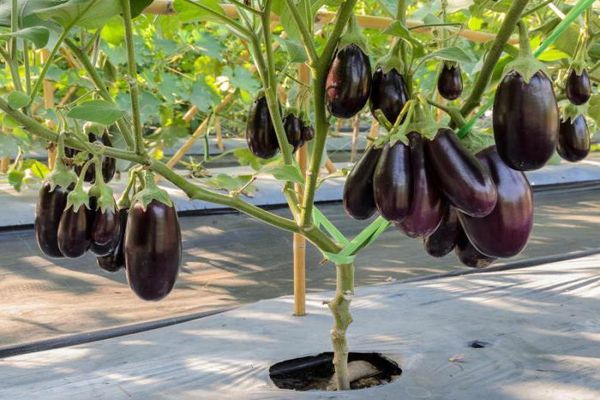
Use settled water, water it around the edges of the container or spray it with a spray bottle. Water procedures are recommended in the morning. Be sure to drain the excess liquid from the sump. To carry out a pick in the container after the plant acquires four leaves.
Landing in the ground
You can send the Nutcracker to the beds after the bushes grow up to 20 centimeters. Place the grooves at a distance of about 55-70 centimeters. Since the bushes of the variety are quite tall and lush, it is better to plant in a checkerboard pattern.
Mandatory planting stage is soil mulching. A layer of chopped straw or sawdust will reduce irrigation and protect the root system of the eggplant bushes from the hot rays of the sun or cold snaps.
Further care of plants
The Nutcracker eggplant is not very demanding, so even a novice gardener can cope with the processes. It is important to follow the main requirements and recommendations:

- watering;
- make nutritional compositions;
- monitor pests and the development of diseases and take timely measures to combat them;
- remove weeds, carry out loosening.
Another important requirement is to carry out the harvest in a timely manner - being late is fraught with rotting of fruits and loss of taste.
Watering
Irrigate the soil as needed. An excess of moisture can lead to the development of diseases, so it is better to do watering more often, but in moderation - the soil should not be dirty.
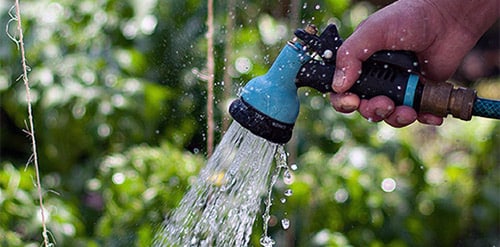
Use only warm settled water for irrigation. Cold liquid for plants is no less dangerous than an excess of it. Before proceeding with watering, it is recommended to loosen the soil surface - this will allow moisture to penetrate to a greater depth.
Fertilization
Due to its high yield, the Nutcracker will require regular nutritional inputs. The first fertilizers will have to be used within half a month after planting seedlings. A prerequisite is a high percentage of nitrogen.
For subsequent fertilization, do not use nitrogen, give preference to potassium, phosphorus. The regularity of the nutrient composition is once every 24-28 days. You can use complex formulations (Agricola, Master). Prepare solutions strictly according to the instructions - exceeding the dosage threatens to burn the root system.
Using home remedies for eggplant feeding is encouraged. It is recommended to use:
- mullein infusion (1 liter per bucket of liquid);
- decoction of wood ash (500 grams per bucket of water);
- infusion of nettle leaves (1 kilogram of plant materials for half a bucket of water).
The use of home remedies is allowed on the leaves. The main thing is to do it in cloudy weather.
Bush formation
Without the formation of plants, it will not work to get a full harvest - the bush will throw all its strength into the growth of the lashes. Pinching should be carried out no later than if there are 6-8 leaves, at a height of about 30 centimeters from the ground surface.
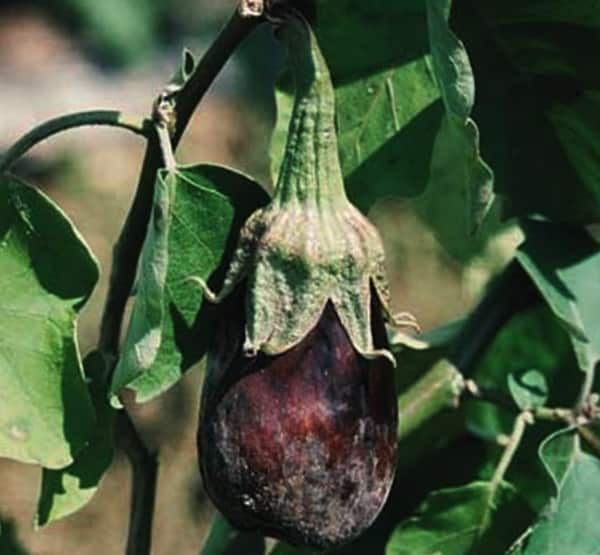
Pinch only the main stem; be sure to remove all leaves below the first internode. Shoots growing from below are also best removed. The nutcracker requires a garter, otherwise, under the weight of the fruits, the whips will sink to the surface of the soil, which can lead to diseases.
Protection against diseases and pests
The nutcracker is a variety that rarely gets sick. With improper care and in adverse conditions, rot and late blight can develop on the leaves and stems. It is better to use chemical preparations - home formulations will not be able to cope with diseases. Self-prepared remedies are best used for prevention.
Pests on Nutcracker plants rarely settle, especially in greenhouse conditions. Preventing the appearance of insects is much easier than fighting them, especially if they have already occupied most of the bushes. It is not necessary to use chemicals - home remedies (infusion of ash, red pepper, tobacco) will drive away almost all pests. If it was not possible to save the plants, apply insecticides. The rule to remember is not to use chemicals before harvesting.
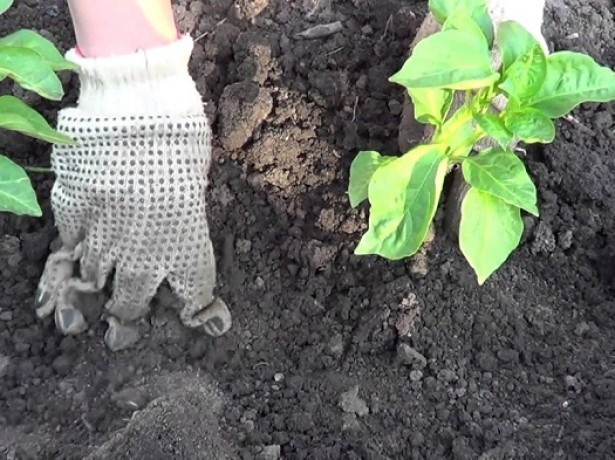
Harvesting and storage
Going to pick eggplants is recommended Nutcracker at the age of technical ripeness. It is better for them to ripen in a cool, dark place. Be sure to send the fruits immediately after collection for storage - this will increase the shelf life of vegetables. Check eggplants periodically, looking for decay. If signs of spoilage are noticed in a timely manner, the fruits should be immediately sent for culinary processing.
Duration of storage of fruits - up to a month, but subject to all the rules. Coolness and darkness are basic requirements. If there are not many eggplants, you can send them to the refrigerator.
It is recommended to keep the fruit of the Nutcracker fresh or frozen. Before sending the eggplants to the freezer, cut the blue ones, boil and cool. In winter, all that remains is to send them to a frying pan or pan. The Nutcracker variety has proven itself well in conservation - marinades, salads, snacks and even sauces are prepared on the basis of blue ones.
Nutcracker eggplants are a great way for novice gardeners to test their strength in growing vegetables.Special difficulties are not foreseen - it is enough just to adhere to a few rules and requirements of agricultural technology in order to get a good harvest of blue ones.







